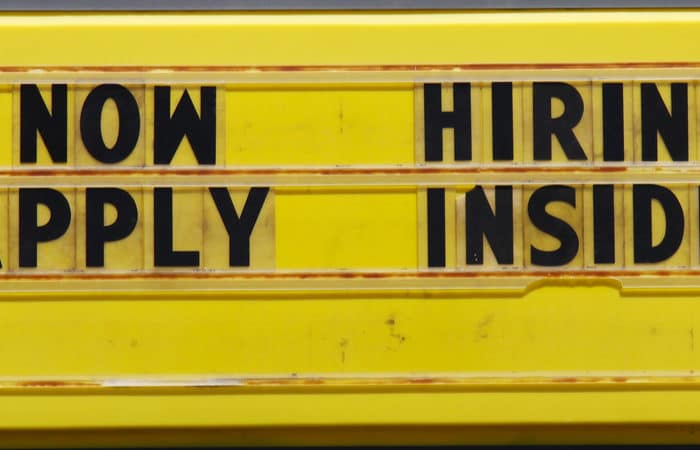Is Your Employer E-Verify Compliant?
Applicants for jobs typically have to undergo numerous types of checks to ensure that they meet the requirements for employment.
While the most obvious check that might come to mind might be verifying your references in order to confirm your skills and experience, in the U.S. employers are also required to take additional steps to ensure that every new hire is eligible to work legally in the country.
Every type of employer is required to complete a Form I-9 for each and every new hire physically working in the U.S. within three days of the start of employment. The I-9 is a two-page form that must be retained on file for a specified period and updated under certain circumstances such as a name change.
But some employers are required to subject new employees to an additional verification step called E-Verify.
What is E-Verify?
E-Verify is an online verification system that confirms the information provided in employees’ Form I-9s by cross-referencing the forms with government records.
Unlike Form I-9, E-Verify also requires employees to submit their Social Security number and requires the employee to produce for your employer identity documents that include a photo, whereas I-9 rules do not require identity documents to include a photo.
E-Verify is done using an online portal, to which your employer will input information from your completed I-9. Your employer is only allowed to E-Verify you once you have accepted an offer of employment and completed the Form I-9; E-Verify is not intended to be a prescreening tool, and employers are not allowed to use the system in order to discriminate in their hiring.
Not all employers are required to use E-Verify, but many do so voluntarily to take extra steps to ensure that all their employees are legally allowed to work. Though E-Verify laws typically vary by state, all federal contractors – and their subcontractors – using contracts that contain the Federal Acquisition Regulation (FAR) E-Verify clause must electronically verify all employees, regardless of where the business is located.
Most mandatory E-Verify requirements at the state level are related to the fulfillment of public contracts, while all businesses are generally allowed to use E-Verify on a voluntary basis. One notable exception is California, where employers are not allowed to compel an employee to E-Verify unless the nature of the employment (for example, it’s connected to a federal contract) requires them to do so by law.
What does E-Verify mean to you?
The first thing prospective employees may wish to know is whether E-Verify applies to them at all, given that it is not a universal requirement. Any employer that uses E-Verify is required to display a Notice of E-Verify Participation poster, provided by the Department of Homeland Security, as well as the Right to Work poster issued by Department of Justice, Immigrant and Employee Rights Section so that you are aware of E-Verify requirements upfront. If the posters cannot be displayed for some reason, they must be provided to you when you apply for the job.
The E-Verify system will not provide your employer with citizenship information or other data that you have not provided – it merely confirms whether you are eligible to work by comparing the information from your Form I-9 to the information contained in certain government databases. If an information mismatch occurs, your employer will either receive a tentative non-confirmation (TNC) or final non-confirmation (FNC).
What Is the difference between a TNC and FNC? What do you need to know if you are not confirmed?
Just like they sound, FNCs are a final decision that you are ineligible to work. TNCs, however, may be corrected and contested, and it is important to understand your rights during that process.
There are two types of TNCs:
- Social Security Administration (SSA) TNC – these include mismatches in your SSA records, such as between your name, social security number and/or birthdate;
- Department of Homeland Security (DHS) TNC – these TNCs are related to citizenship and immigration records, such as mismatches with your passport number, state ID, driver’s license, Alien Registration Number (A-Number), Form I-94 (Arrival-Departure Record) number, and other records.
In the event that E-Verify returns a TNC, your employer is required to timely inform you, providing you with a Further Action Notice and information about the TNC and what your options are as an employee how to contest the TNC. If you wish to contest a TNC, you have eight federal government workdays to visit an SSA field office or to contact the DHS with a copy of the notice.
The first thing you and your employer should do is review the Further Action Notice to confirm that all of the information submitted is correct. Often a TNC can come down to something as simple as a typo, improperly entering your birthday and month, or even skipping a hyphen in your last name. If you decide to contest and resolve the TNC, your employer will refer your case to the SSA or DHS using E-Verify and will provide you with a referral date confirmation. Once you contact the agency in question, they should be able to assist you in resolving your case.
If you receive an FNC or decide to not contest a TNC to not contest a TNC, your employer may terminate your employment. But it is important to know that if you do decide to contest a TNC, your employer is not allowed to take any action against you until the matter is resolved. This includes suspending or terminating your employment, delaying your start date, withholding pay or restricting your training. Once you timely contact the appropriate government agency, your employer will receive a case update via the E-Verify system.



